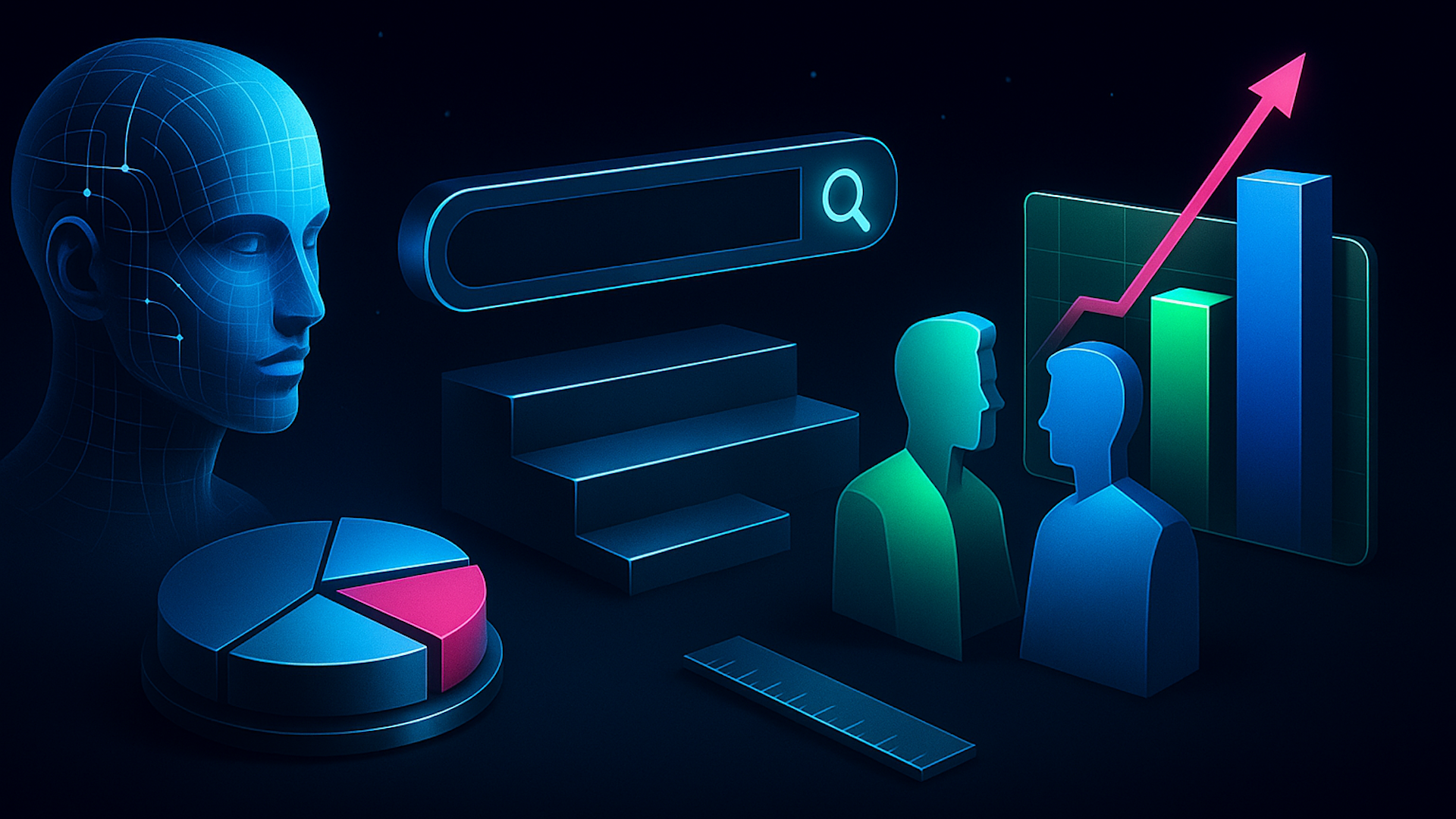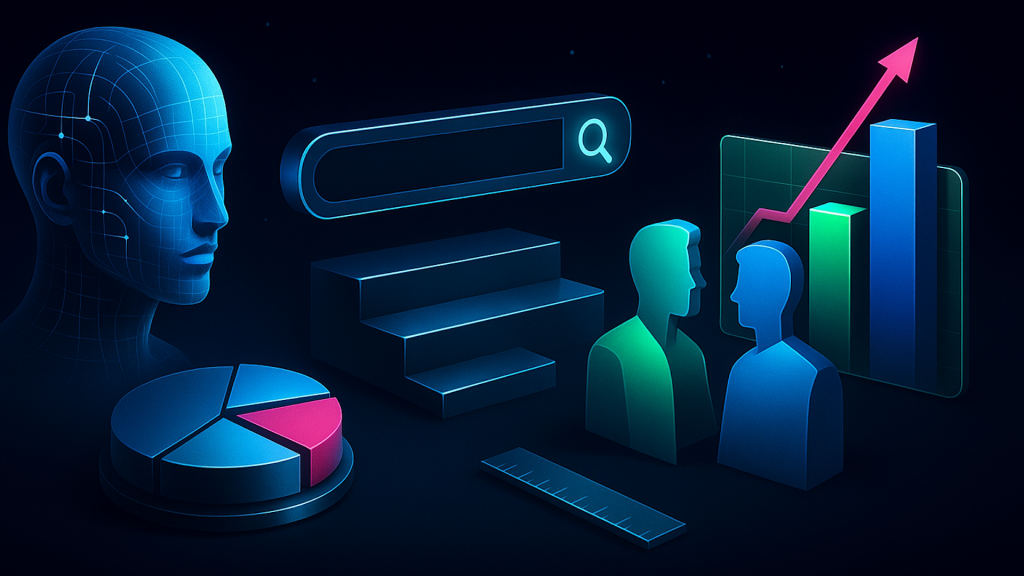Thriving in the AI era of search: Realign, measure, collaborate

As I watched Live with Search Engine Land: SEO, AIO, GEO! on Aug. 11, which featured four top SEO experts discussing how to adapt as search shifts in the AI era, I had the strangest feeling I’d seen this movie before.
I remember feeling the same way back in 2011, when social media was shaking the foundations of search.
The industry was being forced to adapt overnight – much like Hollywood pivoting from silent films to talkies in “Singin’ in the Rain.”
The question is clear: who will thrive as AI reshapes search?
The answer lies in adapting your skills, breaking silos, mastering new metrics, and collaborating across teams.
Realign your career path with the new customer journey
Organizations can’t afford to keep cranking out silent movies if the public is flocking to talkies.
Optimizing video content and text is essential if you want to be the star of a talking picture.
Why video?
Video combines sight, sound, and motion, making it more engaging, memorable, and shareable than text.
It’s a powerful way to convey complex ideas and build emotional connections.
Research backs this up. In Think with Google, Celia Salsi tells us why video now plays a central role in how people shop and make decisions.
The challenge for brands isn’t just getting noticed, but being chosen – especially for considered purchases that require deeper trust.
YouTube plays a key role here.
It’s a top destination for shoppers researching and comparing products, with more than 35 billion hours of shopping-related content viewed last year.
Ads shown on connected TVs also drove over 1 billion conversions.
Salsi also reveals:
- “There’s no one way to shop online. New research decodes multifacted shopping journeys.”
A study of 2,000 online shoppers in the U.S. identified seven distinct shopping journeys based on different needs and motivations. They are:
- Impulse: Shoppers are triggered by something that catches their eye, but these journeys rarely end in a purchase.
- Passion pursuit: These shoppers are already experts in a product category and will wait for the right item at the right price.
- Vision to reality: Driven by style and self-expression, these shoppers use video to find products that will help them achieve a desired look.
- Rookie: New to a category, these shoppers seek ideas, advice, and recommendations to help them decide.
- Quest for the best: These shoppers do extensive research to feel confident in their purchase decisions.
- Buy and try: Shoppers in this category compare a few options and often buy multiple items with the intention of returning some.
- Quick-fire: This journey, which has the highest purchase rate, is for shoppers who need a low-cost replacement or a household staple and know exactly what they want.
Although most online shopping behavior is deliberate, Salsi reveals:
- “YouTube’s influence cuts down the average online video shopper’s journey by six days.”
Get out of your comfort zone and organizational silo
You’ll also want to take a close look at “How to get cited by AI: SEO insights from 8,000 AI citations.”
As Search Engine Land contributor James Allen reported, YouTube was the most cited domain in AI Overviews, followed by blogs like Zapier and news sites such as PCMag and Forbes, which together accounted for more than half of citations.
Websites with detailed, specialized deep content are favored over homepages, and sites known for expertise, particularly in finance and healthcare, tend to be cited, while community sites like Reddit and Quora are cited less often.
It’s time to get out of your comfort zone and organizational silo if you want to connect with people in video marketing and digital PR.
Together, you’ll need to build new teams that can balance multiple disciplines – from content and social to analytics and PR.
Get the newsletter search marketers rely on.
See terms.
Measure outcomes and organic search traffic
To adapt and succeed as search changes in the AI era, you’ll need to measure outcomes alongside organic traffic.
These outcomes fall into two categories that align with video campaign goals:
- Brand awareness and consideration.
- Website traffic, leads, and sales.
Brand awareness and consideration
In a zero-click world, you may be tempted to use a new marketing metric called share of model.
It measures how effectively a brand is represented by large language models (LLMs) like ChatGPT.
This newfangled metric quantifies how well the LLM understands and recommends a brand, based on its identity, products, and reputation.
However, share of model may turn out to be a vanity metric, just like ranking for low-intent keywords, low-quality backlinks, impressions, gross rating points (GRPs), social media followers, and advertising value equivalency (AVE).
Instead, use a different set of metrics to measure brand awareness and consideration: the brand lift study.
Over half a dozen major social media platforms, including YouTube, Facebook, Instagram, X, TikTok, LinkedIn, and Pinterest, provide brand lift studies to advertisers who meet specific spending requirements.
These studies gauge the impact of ad campaigns on brand awareness, brand association, and consideration by surveying groups of users who were exposed to the campaign versus those who were not.
Brand lift studies measure changes in awareness, consideration, and intent – giving you hard data on how campaigns shape perception over time.
Using these metrics as key performance indicators (KPIs) makes far more sense to senior executives than betting your credibility on experimental metrics like share of model, which may not align with share of search or market share.
Website traffic, leads, and sales
For more than two decades, SEOs have tracked organic search traffic as a primary metric.
But with zero-click searches on the rise, it’s time to re-examine how you read Google Analytics 4 (GA4).
In one recent case, a marketer noticed a 28% year-over-year increase in new users.
But a closer look revealed organic traffic down 32%, while “direct” traffic had spiked nearly 47%, now making up three-quarters of all new users.
The culprit?
When their content appeared in Google’s AI Overviews, clicks weren’t passing referrer data to GA4 – making search-driven traffic look like “direct.”
Here’s how to adapt:
- Pay less attention to default channel groups and more to top landing pages within “direct” traffic. If many are recent blog posts, that spike may be AI-driven.
- Use campaign tagging strategically: Add parameters with Google’s Campaign URL Builder to links you share on platforms like LinkedIn. That way, you can measure the impact of your organic content and social posts even when GA4 hides the source.
Collaborate to generate successful campaigns
If you lead a marketing department or agency, you can easily subcontract skills like YouTube SEO, Reddit marketing, digital PR, or brand lift surveys.
After a few projects, you may even decide to bring some of those capabilities in-house.
If you’re an SEO manager or marketing professional, the path looks different. You might:
- Start by analyzing Tubular Labs leaderboards to see which brands are winning attention across YouTube, Facebook, and Instagram.
- Invest in workshops and online courses to expand your own skills – a step I’ve recommended before when talking about upskilling and reskilling.
And why push yourself to do this now?
Because as soon as this fall, senior marketers will be scanning the horizon of a shifting search industry.
Many will call for more creative collaboration, reorganize teams, or review agency relationships to realign with new customer journeys.
The SEOs and marketers who’ve already broken out of their silos – and built connections across video, PR, and social – will be ready to take the lead.







Recent Comments